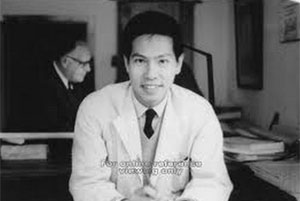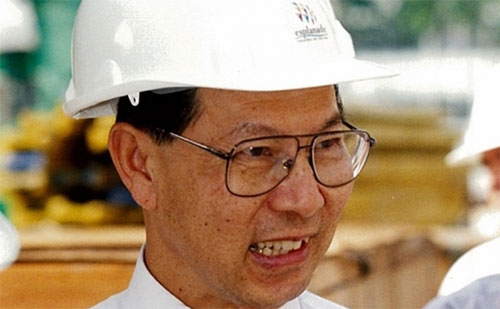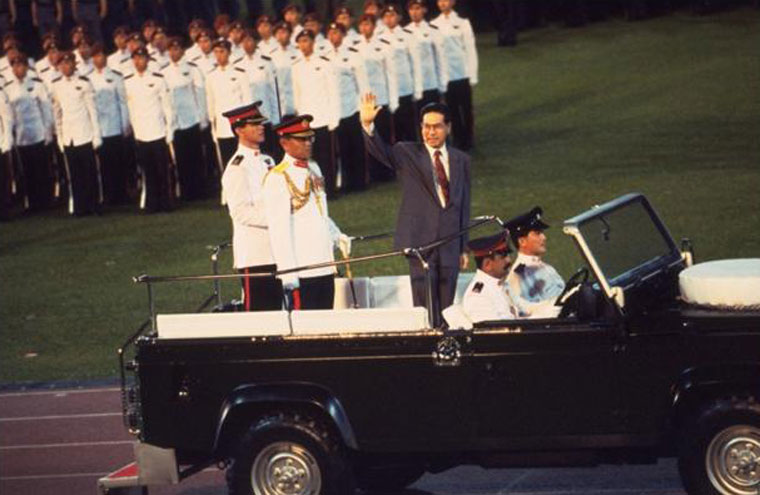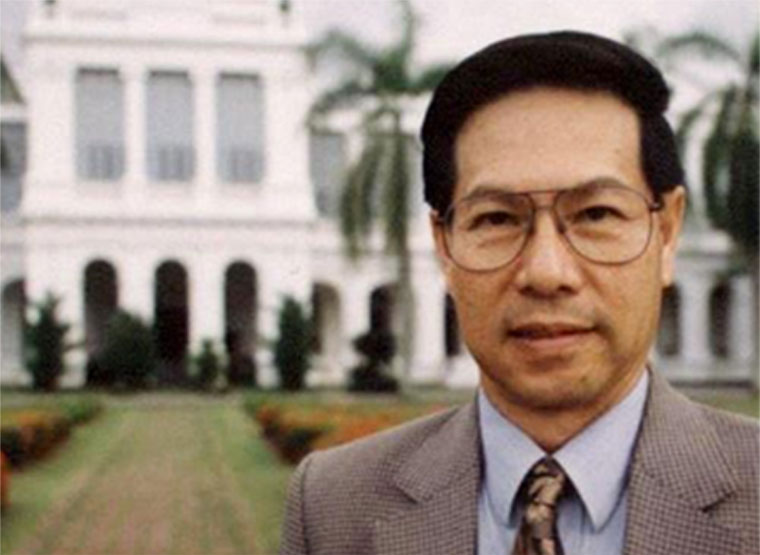As the fifth president of the Republic of Singapore, Ong Teng Cheong was our first head of state to be popularly elected through the people's vote in the 1993 presidential election.
Fondly remembered after his death as "the people's president", Feb. 8, 2017 marked the 15th anniversary of his passing.
Early political career

Ong began his involvement in grassroots activities in the late 1960s when he was staying in Seletar Hills. He was then in his early 30s.
An architect by training, it was Ong's commitment, mannerism and intelligence that was noticed by then Member-of-Parliament for Jalan Kayu, Hwang Soo Jin.
Ong was then appointed the Chairman of the Resident's Association and later introduced by Hwang to Prime Minister Lee Kuan Yew, who once remarked that Ong "had shown a special knack, the ability to get on with ordinary people, and empathise with them."
This was a reading that would later prove spot-on and even prophetic.
Prior to being fielded in the 1972 election, Ong worked with the Ministry of National Development as a town planner from 1967 to 1971.
From 1972 to 1991, Ong served as a People’s Action Party (PAP) MP for the Kim Keat constituency.
His first political appointment came barely three years after being elected, when he was made Senior Minister of State for Communications.
In 1977, he was appointed Acting Minister for Culture, and became Minister for Communications in 1978.
Later, during his tenure as the Minister of National Development, he was an advocate for the development of the Mass Rapid Transit (MRT) system, the largest construction project in Singapore's history
In 1983, Ong replaced Lim Chee Onn as Secretary-General of the National Trades Union Congress (NTUC).
Two years later, he became the Second Deputy Prime Minister, and held this post till November 1990, when he was promoted again to Deputy Prime Minister.
From 1991 to 1993, he served in the Toa Payoh Group Representation Constituency (GRC).
In August that year, Ong resigned from his posts in the Cabinet, the PAP and the NTUC to contest the presidential election.
The labour chief who sanctioned a strike

Ong's affable qualities were further refined as he spent more than 20 years in the public service and labour movement, before becoming president.
Most notably, his people skills were put to good -- and very possibly dramatic -- use, during his tenure as chief of the labour movement.
As a union activist in NTUC, Ong was ferocious in working actively and forcefully in the interests of the unions in a way that his predecessor had never been seen to do, and stretched union activism to the limits that would be tolerated by the government.
For example, in January 1986, Ong sanctioned a strike in the shipping industry, the first in Singapore in about a decade.
Not only did he approve of the strike, he did not inform the Cabinet beforehand, out of fear that they would prevent him from going ahead with it.
In a subsequent Asiaweek interview in year 2000 after his tenure as president ended, Ong revealed:
"Some of them were angry with me about that... the minister for trade and industry was very angry, his officers were upset. They had calls from America, asking what happened to Singapore?"
One of those who vigorously opposed Ong's decision to sanction the strike is none other than our current president, Tony Tan, who was then the minister for trade and industry.
Tan was concerned with investors' reactions to a perceived deterioration of labour relations or an impact on foreign direct investment needed for job creation.
However, Ong viewed the strike as a success:
"I had the job to do... [the strike] only lasted two days. All the issues were settled. It showed the management was just trying to pull a fast one."
He believed it was necessary as "[the] management were taking advantage of the workers".
He was able to -- for the lack of a better word -- strike a delicate balance because he had the trust of the government and his colleagues, as well as the people and workers he represented.
As President of Singapore
 Ministry of Information and the Arts Collection, courtesy of National Archives of Singapore
Ministry of Information and the Arts Collection, courtesy of National Archives of Singapore
As the fifth president of Singapore, Ong served a six-year term from Sept. 1, 1993 to Aug. 31, 1999.
Initially, Ong, who ran for the presidency under the PAP’s endorsement against Chua Kim Yeow, a former accountant general, saw him win marginally after garnering only 952,513 votes while his opponent received 670,358 votes, despite having greater exposure and a more active campaign.
However, when in office, the legacy of Ong's presidency took shape.
In 1994, he questioned the government’s interpretation of the constitution when the latter introduced a bill to revise the veto powers of the president.
He then asked for the matter to be referred to a special High Court Tribunal, chaired by the Chief Justice.
When the Tribunal ruled in favour of the government, Ong graciously accepted the decision.
In 1997, he refused to approve the Central Provident Fund (CPF) Board’s budget until he was satisfied that it would not draw down on the nation’s reserves.
The events resulted in two major institutional developments: The first was the creation of a tribunal of judges for constitutional disputes, and the second was a White Paper, which placed on public record the working principles agreed between the government and the president on protecting the nation’s reserves.
Ong’s presidency was also marked by the initiation of many charitable projects, the largest of which is the annual President’s Star Charity, which was launched the year he was elected President and has since gone on to raise millions of dollars for local charities.
An accomplished musician, Ong would also lend a hand to various welfare causes.
He occasionally played the piano in public events and even conducted the Singapore Symphony Orchestra.
Even as the Acting Minister for Culture in the late 1970s, he was determined to transform Singapore from a perceived cultural desert to a city of the arts.
He left his mark on the Singapore arts scene, as his efforts led to the first Singapore Festival of the Arts.

Ong also took his role as the guardian of Singapore’s reserves seriously by questioning the type and quantity of assets the government owned. This episode played out as a public dispute between him and the government over the access of information regarding Singapore’s financial reserves.
Ong’s stand was that he could not carry out his duties if he was unaware of how much reserves Singapore has. He said in the Asiaweek interview in 2000 that he had a job to do, whether the government liked it or not.
In his later years, he also opposed the sale of POSB (Post Office Savings Bank) to DBS (The Development Bank of Singapore) in 1998 during his last year in office. He felt that the sale was procedurally inappropriate and did not regard the president’s significance as the guardian of the reserves. This was due to the fact that POSB at that time was a government statutory board whose reserves came under the president’s protection.
Ong’s popularity was by the end of his presidential term evident.
After his wife, Ling Siew May, passed away weeks before he stepped down as president, there was an outpouring of condolences from the public.
Before his death in February 2002 at the age of 66 from lymphoma, he had asked to be cremated and for his ashes to be placed at Mandai Columbarium with those of ordinary citizens instead of Kranji State Cemetery, where late dignitaries are usually buried.
Singapore flags flew at half mast on the government buildings, including the Istana, to pay him his last respects. It was the first time in Singapore’s history this was ever done.
However, Ong’s standing as the people’s president was celebrated only after his passing, as his status and achievements have been lionised mostly after his death.
This is perhaps due to the perception that he is the first popularly-elected, and possibly the only president so far, who exercised his powers boldly and fully.
It should also be noted that as president, Ong said:
"Some people still ask whether my long previous association with the PAP will stop me from acting independently. The answer is 'no'. My loyalty is first and foremost to the people of Singapore. It has always been so and it will always remain so."
Read these to while away more time so lunchtime comes quicker:
6 times S'pore played with food and made a global impact
Not an art person? Here's how you can still enjoy the Singapore Biennale.
Top photo via Ministry of Information and the Arts Collection, courtesy of National Archives of Singapore
If you like what you read, follow us on Facebook and Twitter to get the latest updates.
If you like what you read, follow us on Facebook, Instagram, Twitter and Telegram to get the latest updates.
